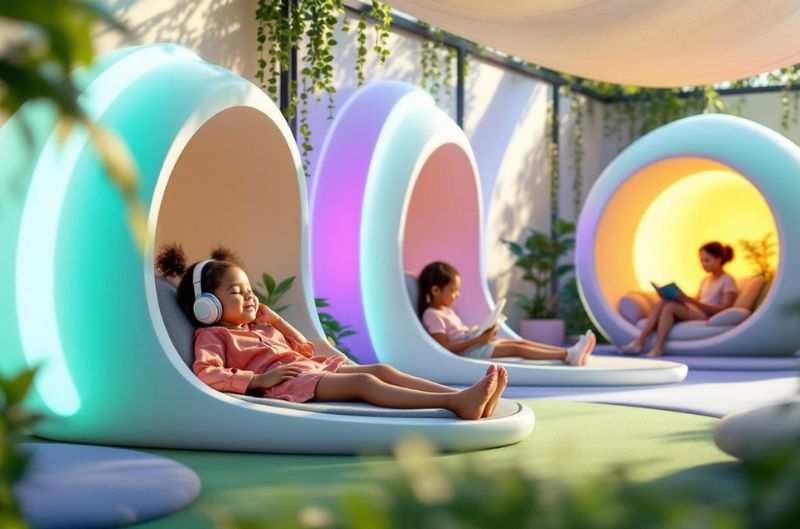
Why Every Playground Should Have a Quiet/Sensory Retreat Zone
Author: Austin Stanfel
Every playground should include a quiet or sensory retreat zone, as these spaces offer essential benefits for children’s emotional well-being, self-regulation, inclusivity, and social development. Sensory retreat zones transform playgrounds from simply energetic places to truly supportive environments for children of all abilities and play styles.
Why Sensory Retreat Zones Matter
For many children, the energy and noise of playgrounds can become overwhelming, especially for those with sensory sensitivities, anxiety, or neurodivergent needs. Quiet zones provide a sanctuary where children can retreat, regulate their emotions, and take a break from intense sensory input. These spaces often include calming features such as soft surfaces, shade, natural elements, and gentle sensory activities, helping children feel safe and supported.
Emotional and Psychological Benefits
Quiet and sensory retreat zones allow children to manage and regulate their emotions in a way that feels safe and comfortable. This is crucial for children who might experience anxiety or sensory overload in a busy play environment. Emotional regulation in these spaces leads to reduced stress levels, enhanced self-confidence, and overall better mental health outcomes, supporting children in navigating social situations at their own pace.
Encouraging Inclusion and Equity
Inclusive playground design means considering the needs of all children, including those with Special Educational Needs and Disabilities (SEND) or other diverse abilities. Sensory retreat areas promote equity by providing spaces designed for different ways of playing and learning. These zones ensure every child feels welcome, increasing participation and reducing social isolation. When playgrounds are designed with sensory zones, they meet accessibility standards and help the broader community understand and accept neurodiversity.
Supporting Social Development
Children in retreat zones often engage in quieter, less intense social interactions, which can help build peer relationships and a sense of belonging. For children with social anxiety or developmental differences, these spaces offer opportunities to interact in ways that are comfortable and meaningful. This encourages the development of critical social skills and empathy among all playground users.
Enhancing Cognitive and Physical Development
Sensory play in these zones helps children explore personal preferences and develop self-awareness, autonomy, and confidence. Sensory experiences encourage problem-solving and creativity, contributing to cognitive growth and resilience. Features such as sand pits, water tables, and nature elements offer both sensory stimulation and opportunities for gentle exploration away from the main play structures.
Design Considerations for Quiet Zones
Effective quiet zones incorporate:
- Shaded or sheltered areas that offer respite from direct sunlight and noise.
- Soft, tactile surfaces, such as grass or rubber, that invite gentle exploration.
- Natural elements like plants, water, and fragrant flowers can engage the senses in a calming way.
- Activities such as musical panels, art stations, or simple nature observation for sensory-friendly experiences.
Building a Standard of Inclusion
Making quiet and sensory zones a standard feature in every playground elevates the entire play space, ensuring every child can play, relax, and connect safely and confidently. These zones foster a community culture of empathy, respect, and understanding by modeling inclusive design in everyday public spaces.
In summary, quiet and sensory retreat zones are essential for creating playgrounds where every child feels welcome, supported, and free to experience the joy of play in their own way.

